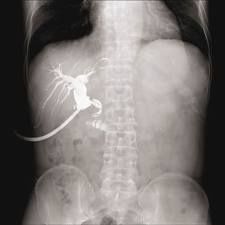Routine cholangiography is a procedure that is often performed during laparoscopic cholecystectomy, a surgery to remove the gallbladder. It involves the injection of a dye into the bile ducts to visualize the anatomy and identify any potential injuries or abnormalities. While routine cholangiography has been a standard practice for many years, there is debate about whether it is necessary in all cases. In this essay, we will examine the arguments for and against routine cholangiography and explore whether the procedure is justified.
Arguments Against Routine Cholangiography There are several arguments against routine cholangiography, including:
-
Low incidence of bile duct injury - Bile duct injury is a rare but serious complication of laparoscopic cholecystectomy. However, the incidence of this complication has decreased significantly in recent years due to improvements in surgical technique and technology. As a result, the risk of bile duct injury is relatively low, and routine cholangiography may not be necessary in all cases.
-
Increased operating time and cost - Routine cholangiography adds time and cost to the surgery, as it requires additional equipment and personnel. This can be a burden on the healthcare system and can lead to longer wait times for patients.
-
False-positive results - Cholangiography can produce false-positive results, leading to unnecessary diagnostic testing and interventions. This can cause anxiety and discomfort for patients and can also increase healthcare costs.
-
Inconclusive results - Cholangiography can also produce inconclusive results, which may require additional imaging or procedures to obtain a definitive diagnosis. This can prolong the patient's hospital stay and increase the risk of complications.
-
Radiation exposure - Cholangiography involves the use of radiation, which can increase the risk of cancer and other health problems over time. While the amount of radiation used in cholangiography is relatively low, it is still a concern for some patients and healthcare providers.
Arguments For Routine Cholangiography There are also arguments in favor of routine cholangiography, including:
-
Detection of silent bile duct stones - Bile duct stones can be present in up to 20% of patients undergoing laparoscopic cholecystectomy, even in the absence of symptoms. Routine cholangiography can detect these silent stones and prevent future complications.
-
Identification of aberrant anatomy - Cholangiography can also identify aberrant anatomy, such as a duplicated bile duct or a common bile duct that is located in an unusual position. This information can be important for surgical planning and can reduce the risk of complications during surgery.
-
Reduced risk of postoperative complications - Studies have shown that routine cholangiography can reduce the risk of postoperative complications, such as bile leaks and bile duct strictures. These complications can be difficult to manage and can lead to prolonged hospital stays and increased healthcare costs.
-
Improved patient outcomes - Routine cholangiography can improve patient outcomes by reducing the risk of complications and ensuring that the surgery is performed safely and effectively.
Conclusion Routine cholangiography is a controversial topic in the field of surgery, with arguments for and against its use. While there is no consensus on whether the procedure is justified in all cases, it is clear that the decision to perform cholangiography should be made on a case-by-case basis, taking into account the individual patient's risk factors and clinical presentation.
Patients who are considering laparoscopic cholecystectomy should discuss the potential benefits and risks of routine cholangiography with their healthcare provider and carefully consider whether it is necessary in their case. While routine cholangiography can provide important information about the anatomy of the bile ducts and reduce the risk of complications, it can also increase operating time and cost and producealse-positive or inconclusive results. Additionally, the risk of bile duct injury during laparoscopic cholecystectomy has decreased significantly in recent years, which may make routine cholangiography unnecessary in some cases.
Ultimately, the decision to perform routine cholangiography should be based on a careful assessment of the patient's individual risk factors, including age, sex, BMI, comorbidities, and previous abdominal surgeries. Patients who are at higher risk for bile duct injury or who have a history of bile duct stones may benefit from routine cholangiography, while those who are at lower risk may not need the procedure.
In summary, routine cholangiography is not justified in all cases, but it may be beneficial in certain high-risk patients. The decision to perform cholangiography should be based on a careful assessment of the patient's individual risk factors and clinical presentation, and should be made in consultation with a healthcare provider who is experienced in the management of gallbladder disease. By taking a personalized approach to the use of routine cholangiography, we can ensure that patients receive the best possible care and achieve the best possible outcomes after laparoscopic cholecystectomy.
